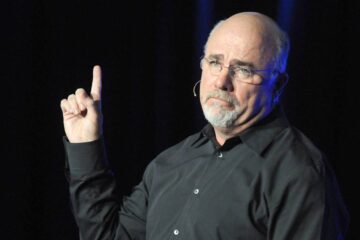Tesla’s competitors have made progress in cutting the EV leader’s market share.
Elon Musk and Tesla changed the way consumers think about and look at cars.
They pushed the entire automotive industry to convert to electric vehicles and make the technology the future of the sector, which is crucial in the economy.
Today, almost every carmaker — legacy automakers, upstarts, luxury brands, sports-car manufacturers — offers an electric or plug-in-hybrid model. The groups are investing billions of dollars to develop electric vehicles.
Consumers are also following developments, since their demand for these green vehicles is rising sharply even as the cars remain expensive and the numbers of charging stations continue to lag. Charging is still time-consuming, and EV owners must plan their trips according to the geography of charging stations, which is a particular headache.
Overall, the view of EVs has changed dramatically and positively, and the authorities are increasingly encouraging consumers to buy electric vehicles by extending tax credits in major legislation. One of the key objectives of the Biden administration’s Inflation Reduction Act is to encourage the development of affordable electric vehicles.
‘We Plan to Challenge Tesla’ — Ford’s Farley
All these factors mean that Tesla’s competitors have gradually begun to narrow the wide market gap between them and Musk’s group.
One such rival is Ford (F) – Get Free Report. The Blue Oval is one of the few vehicle manufacturers that publicly have made clear that their main rival is Tesla (TSLA) – Get Free Report.
“We plan to challenge Tesla and all comers to become the top EV maker in the world,” Ford Chief Executive Jim Farley said last April. “That’s something that no one would have believed just two years ago from us.”
Ford has given itself the means to compete with the market leader: Farley began by separating the company’s production activities for gasoline vehicles from those of electric vehicles. He created Ford Blue for traditional cars and Ford Model e for EVs.
The goal is to enable Ford Model e to operate like a startup tech company, able to quickly make changes and adapt to any situation. Ford, like most automakers, has also adopted recipes that work at Tesla.
One example is over-the-air delivery of software updates in vehicles with new features and functionality.
When an update comes available, vehicle owners are notified and given instructions on how to do it themselves. This keeps their vehicles up-to-date with the latest innovations and gives the car manufacturer a steady source of income through subscriptions for the service updates.
Farley has also deployed a profitable strategy concerning the first models to be developed. He chose vehicles that resonate with consumers. Two of Ford’s first electric models are the electric version of the iconic F-150 pickup and the green counterpart of the Ford Mustang.
The first is the F-150 Lightning, a vehicle seen as the one that would seduce America into converting to electric vehicles.
Ford
‘Congratulations Jim Farley’ — Tesla’s Musk
The Ford Mustang Mach-E plays on the sentimentality and memories that surround the nearly 60-year-old Mustang, the internationally iconic sports car.
The company has just announced that it has developed the 150,000th Mustang Mach-E since production began almost two years ago. That’s a significant achievement in view of the supply-chain issues that have been disrupting the industry, plus the sharp price rises for raw materials like nickel and cobalt that are essential to EV batteries.
This is “a significant milestone as the company scales EV production to a rate of 600,000 annually by late 2023 and more than 2 million annually by 2026,” the company said in a news release.
The vehicle will be available in 37 countries for 2023, up from 22 in its first year, and Ford plans to sell it in additional countries.
“Almost all of Mustang Mach-E’s growth to date is coming from customers replacing an internal combustion vehicle with electric – more than 8 in 10 U.S. customers and 9 in 10 European customers,” Ford said.
Musk, who is well aware how difficult mass-production of an electric vehicle is, is an industry-team player and has just hailed Ford’s accomplishment.
It is rare to see the Techno King, his title at Tesla, praise his competitors, even if he believes that the more electric cars ride the roads, the more his legacy is established.
“Congratulations @jimfarley98 @Ford!” the billionaire tweeted at Ford and Farley on Nov. 30.
“Thanks, @elonmusk. Lots of work ahead ⚡️” Farley responded.
It’s important to remember, however, that if Tesla has ceded market share to its rivals, the company is still by far the leader in EVs, holding two-thirds (65%) of the market in the U.S., according to data from S&P Global Mobility.
Of the more than 520,000 electric-vehicle registrations in the U.S. in the first nine months of 2022, about 340,000 were Teslas.
Its rivals still have a long way to go.
Cyber Week Deal
Get Action Alerts PLUS for our lowest price of the year! The markets are tough right now, but this is the best time to have professional guidance to help navigate the volatility. Unlock portfolio guidance, stock ratings, access to portfolio managers, and market analysis every trading day. Claim this deal now!


